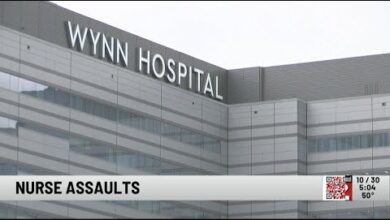Nursing shortages in surgery increase risk of patient death

Surgery patients have a roughly 10% higher chance of dying on a ward with low nursing staffing levels, a new study has suggested.
The study, published by Oxford University Press and conducted by University of Southampton researchers, analysed data from 213,910 NHS hospital admissions of surgical patients between April 2015 and February 2020, to see the relationship between nurse staffing and adverse outcomes.
“Adequate nurse staffing on wards is vital to ensure the safety of patients undergoing and recovering from surgery”
Paul Meredith
It found that both registered nursing and nursing support worker shortages on the surgery ward strongly correlated with increased risks of longer hospital stays, readmissions, hospital-developed conditions such as pressure ulcers and death.
According to the research, the relative risk of a surgical patient dying was increased by 9% for each day where registered nursing shortages were reported.
This additional risk increased to 10% when the shortage was of nursing support staff.
Risks for specific hospital-related conditions also increased when nurse shortages were reported.
The study found evidence that registered nursing shortages correlated with a 5% increased risk of deep vein thrombosis, 6% for pneumonia and 6% for pressure ulcers. Too few nursing assistants also increased the risk of these conditions by 3%, 5% and 3% respectively.
Meanwhile, the risk of readmission was found to be 2% higher during nurse shortages, and 1% higher when nursing assistant shortages were reported.
The researchers said that, previously, interventions to address safety concerns like readmissions and complications had focused on training and checklists – but that the study could provide evidence for staffing being similarly important in this respect.
“Understaffing by both registered nurses and nursing assistants is associated with increased risks of a range of adverse events, and generally larger effects are seen with registered nurse understaffing,” they wrote.
They pointed to other recent research which had also found that higher nurse staffing levels were associated with a lower 30-day mortality rate for surgery patients.
However, most previous studies have looked at staffing at a hospital level, rather than in the surgical wards, which is what this latest paper has done.
Paul Meredith, lead author and senior researcher at the University of Southampton, said the research would act as a “timely reminder” about the impact of workload on patients outcomes.
“The safety of patients undergoing surgery is paramount and there is rightly a considerable emphasis on appropriate systems, policies, and procedures,” said Mr Meredith.
“This research is a timely reminder that workload is also a major driver of risk and that risks to surgical patients persist beyond the immediate operative period.
“Adequate nurse staffing on wards is vital to ensure the safety of patients undergoing and recovering from surgery.”
The study – Associations between outcomes for surgical admissions and nurse staffing – a longitudinal study using routine data from English Acute Hospitals – has been published today in the British Journal of Surgery.







